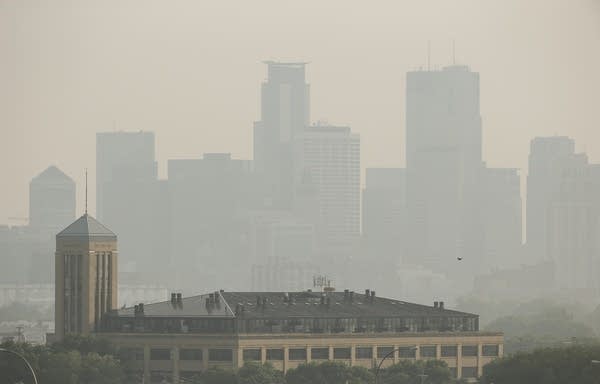Minnesota's generally clean air still contributes to thousands of deaths

Go Deeper.
Create an account or log in to save stories.
Like this?
Thanks for liking this story! We have added it to a list of your favorite stories.
A new state evaluation of Minnesota's air quality statewide finds it meets federal clean air standards.
"But even low and moderate levels of air pollution can contribute to serious illness and early death," said Minnesota Pollution Control Agency Commissioner Laura Bishop. The state agency worked with the state Health Department to create a new study of how air quality affects human health across the state.
The findings are based on data from 2013, the most recently available. The research indicates ground-level ozone or fine airborne particles were a factor in between 5 and 10 percent of all Minnesota deaths that year. That translates to between 2,000 and 4,000 deaths.
Up to 5 percent of all people who visited the hospital or emergency room that year for heart and lung problems did so partly because of air pollution.
Turn Up Your Support
MPR News helps you turn down the noise and build shared understanding. Turn up your support for this public resource and keep trusted journalism accessible to all.
The report is a follow-on to a 2015 study of air quality in just the Twin Cities.
At a news conference in southeastern Minnesota, Bishop said there are other troubling findings, even though Minnesota's air quality is meeting federal standards.
"Disparities abound," she said. "What we see is growing environmental health disparities in communities of color, our lower income areas, our seniors. They bear a heavier burden from air pollution than our other communities."
Counties where more residents are uninsured or living in poverty had the highest rates of early death attributable to poor air quality.
The report is unique, said Robert Moffitt of the American Lung Association in Minnesota, because it demonstrates that air quality health effects are not just an urban problem. Rural residents are at risk, too.
"Really when we're talking about people who have less insurance or who are older, we're talking about Greater Minnesota," he said. "And for these people, air pollution is an especially big problem."
Generally, the elderly, people with pre-existing heart or lung conditions and children with uncontrolled asthma are also more likely to be affected.
According to the report, pollution levels are higher in southern Minnesota, with ozone concentrations highest in the southwestern part of the state. Fine particle concentrations are highest in the metro area and southeastern part of the state.
State Health Department Commissioner Jan Malcom said reducing air pollution by an additional 10 percent — roughly the same reduction in pollutants seen in the last decade — would prevent up to 500 premature deaths, 70 hospitalizations and 150 emergency room visits annually.
"We call that a win-win — improving health and saving health care costs at the same time," she said.
But Malcom said reducing air pollution is only part of the solution. She said it's also important to address underlying inequities like poverty, discrimination and barriers to health care that can exacerbate the impacts of poor air on health.


